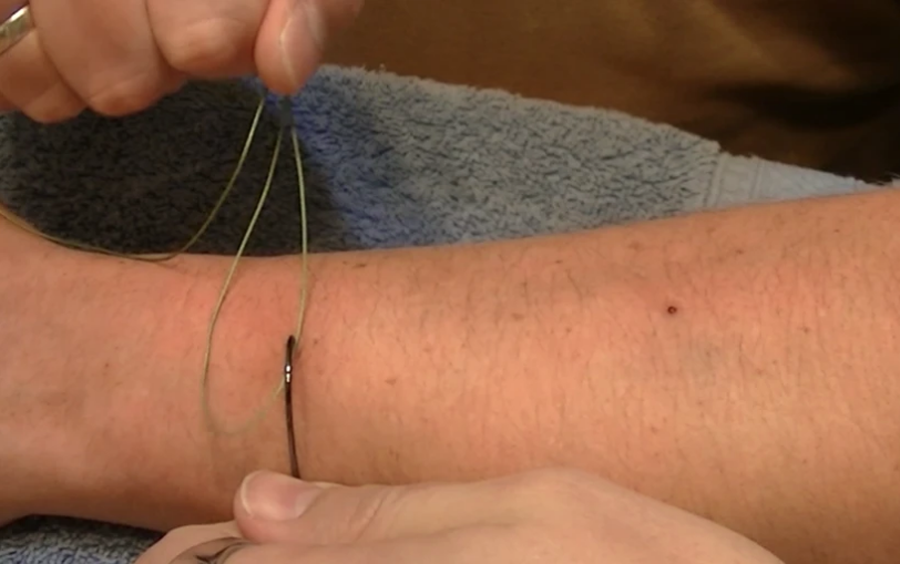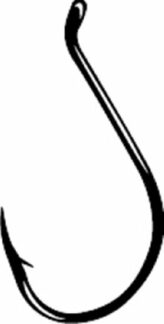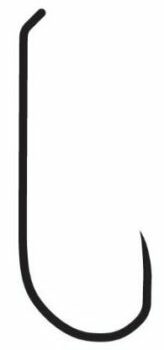
The infamous treble hook, the worst offender of catching anglers’ skin and clothing… not to mention killing fish post release.
Angie hooked her hand with a single barbed hook while attempting to release a trout. She maintained enough tension on her off-hand connection, holding the fly rod, that the fly unexpectedly came loose and firmly embedded itself in the lower, thick part of her thumb.
The video below, one of several you could Google on YouTube, deals with removing a flesh penetrated barbed hook.

The author in New Zealand.
By Skip Clement
As a fly fisher with a lot of saltwater time and maybe three or four body hook-ups witnessed with single barbed hooks the actors; the solution always meant pushing the hook point all the way ‘around’ so the barb was exposed, snip the hook off just past the barb and back the shank out fast.
Bloody? Yup, and painful, but not as bad as pulling it back out with barb buried in the flesh – ouch.
So, some say, why would anyone use barbed hooks these days – given the facts?
- The mortality rate for fish caught with barbed flies or lures is almost double the mortality rate of fish caught with barbless flies or lures (Taylor and White, 1992)
- Barbless hooks reduce physiological stresses to fish from shortened landing time, handling time, and air exposure during hook removal or when photographed. (Meka, Julie, 2004)
- Mortality “…losses from treble barbless hooks were 4.5 times that of losses from single barbless hooks.” (Reingold, Melvin. 1979)
- Angling with barbed hooks increases tissue damage, handling time, exposure to air, and causes a reduction in smolt numbers and adult returns.” (Pollard, Bjorn. 1973)
To some, barbed hooks are no longer an option
If anglers are committed to reduced fish mortality then they must promote easy release and less handling time. Frankly, this also contributes to more angler satisfaction through multiple catches.
Reduced hooking injuries and handling time are vital benefits to consider in supporting regulation change. Reduced mortality associated with angling by requiring barbless hooks is an important policy decision, one that will be an effective conservation management tool.
A tenkara angler makes a point
A barb creates resistance that makes it harder for the hook point to penetrate. That increases the likelihood of getting a bad hookset and losing fish. Go take a piece of paper and try to hook it with both a barbed and barbless hook and you’ll see what I mean. I’ve seen hooks that had barbs twice the diameter of the hook wire. That’s a recipe for a lost fish! It’s much easier to penetrate the fish’s mouth all the way to the bend if the hook is more like a smooth needle than a barbed harpoon.
A de-barbed Oki Kebari makes it much easier to get a good hookset–especially with softer tenkara rods.
The reality is that a barbed hook will hold better
While barbs will hold your fish better, and you’ll lose less fish, there is a trade-off as it pertains to danger to the fish and you. With no barbs, the danger to you and the fish is far less; you may swap, losing a few more fish. Another way to see it is maybe crimping a bit – use the hump created as a holding advantage, or, if the fish is for the table – use a barb.
The argument that barbless means overplaying the fish will cause mortality [for fear of losing the fish] is more of an angler issue than a hook issue
Featured Image Survival Hax.com.




